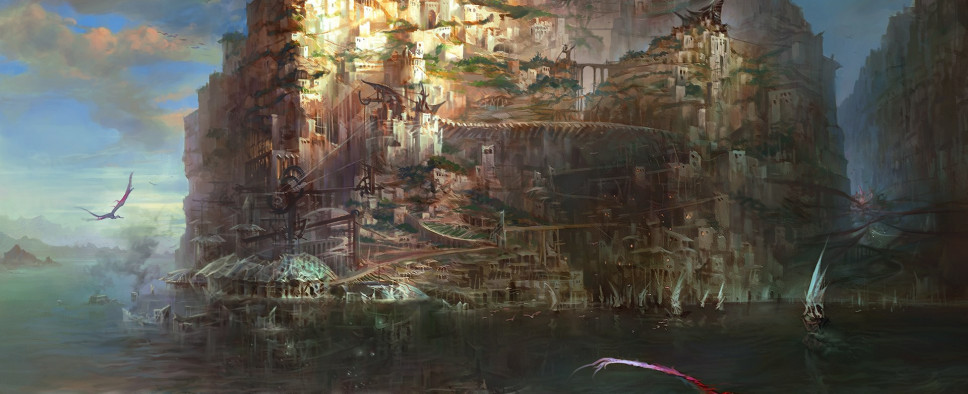Torment: Tides of Numenera Post-funding Update #29: Cliffs Notes
-
Category: News ArchiveHits: 2339

The latest Torment: Tides of Numenera post-funding Kickstarter update brings us some lore on Sagus Cliffs and some thoughts from Adam Heine on the game's adaptation of the Numenera pen and paper rules. Here's a snippet:
The Sagus Protectorate was once a respectable kingdom, if not quite an empire, but has shrunk to the immediate environs of its once-proud capital city, Sagus Cliffs. For hundreds of years, Sagus Cliffs has acted as a conduit for numenera between the west and the waters of Garravia Sound - travelers who wanted to use the harbor of the city of the ancients had to pay a nominal fee in numenera, shins, or labor. The city began to collect a treasury, and they used the power they accumulated to expand their borders significantly.
Two centuries ago, the city was on the verge of expanding its reach again when a slave revolt spilled from the depths of the nearby Bloom, toppling the power structures of the city and forcing a dramatic rewriting of Sagus Cliffs's plans for the future. For nearly a hundred years, the aristocrats and the wealthy laid low, moved their money around, and pretended to be paupers along with the rest while they slowly co-opted the former slaves with money and prestige. Once the slave leaders settled into the familiar ritual of establishing place and rank, believing in the importance of law and property, the old families began to reestablish their claims. By intermarrying with the children of the former slaves, the old aristocrats seized on the new power structure, and thus returned themselves to power as the Slave Families a cruel joke, considering that most of the actual slaves had been neatly excised from the families.
Today, Sagus Cliffs is a city of maybe 90-100,000 people. They regard themselves as the rulers of the entire Protectorate, but in practice they rule little outside their walls; the city's leaders are more concerned with besting one another politically and socially than with maintaining the land outside their shell. They scheme and jockey for position, retaining the city's imperial pretensions and enslaving its residents to the mindset that their glory will rise again. Sagus Cliffs shows every sign of an empire in decline, with decadence the order of the day.
Three walls define the city. The first is a low plas-steel wall around the perimeter of the new city that girdles the city's outskirts that is, any of the part of the city that sits on the broad plain before the great walls of the interior rise up. The plain approaches the headlands of the Sagus Cliffs as a crammed and stinking slum. A variety of architectural styles are in play here, evidence of decade after decade of gentrification and the inevitable decay of the neighborhoods. Major streets are wide, suitable for marching a column of troops, while some of the side streets and alleys are barely wide enough for a single automaton-led cart to roll through. The area is grimy, like living in the shadow of a smokestack. There are manufactories large and small here, smelters and smithies, tanners and slaughterhouses. Many blocks are deserted, desolate, burned out. it has been easier to move than to rebuild in this greatly shrunken city.
The second wall is a shimmering haze, a shield against the deadly nanite storm known as the Iron Wind. It protects the old city like a curtain wall around a castle, and in times of danger the Aeon Priests in charge of its workings can harden it against other threats as well.
The third and inmost wall is older and more physical, and it marks the change between land and sea. Ancient weapons powered by armatures mounted on this wall can fire at enemies kilometers away, toward both land and sea. This is the city center, where the city's council meets, where universities and artists build and catalog culture and learning, where the economic hub of the entire area comes into sharp focus. It is here that the wealthy dwell, looking across the storm-swept sound, plotting to advance themselves against their compatriots.

